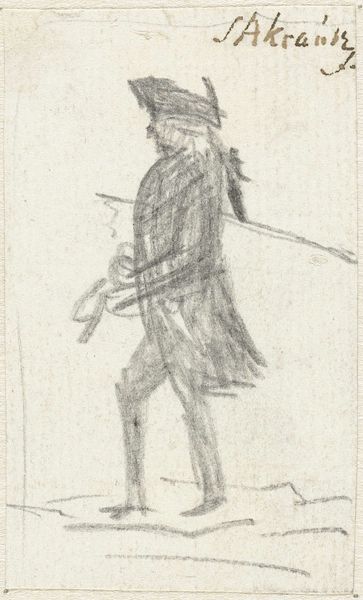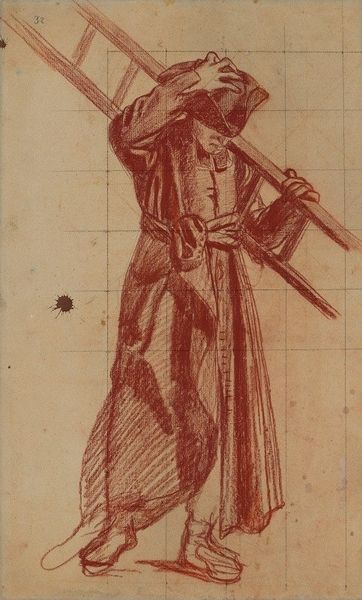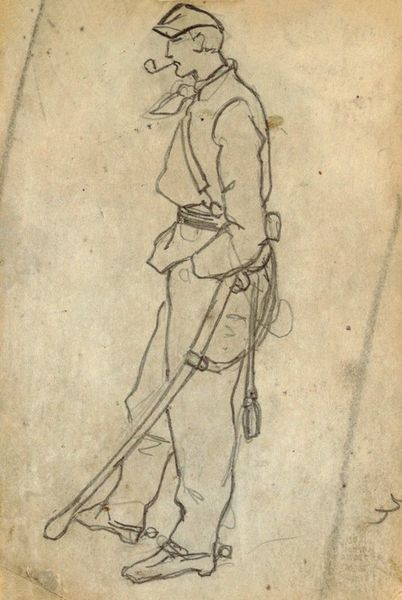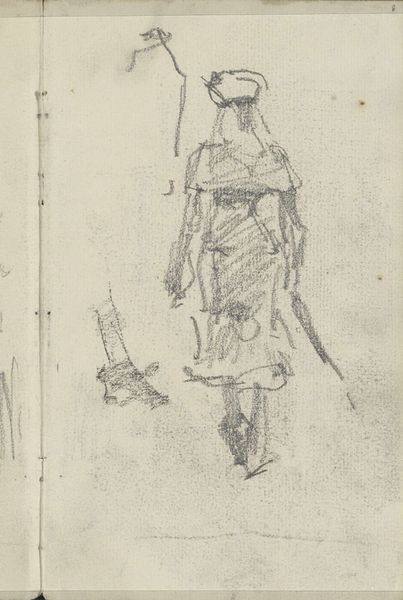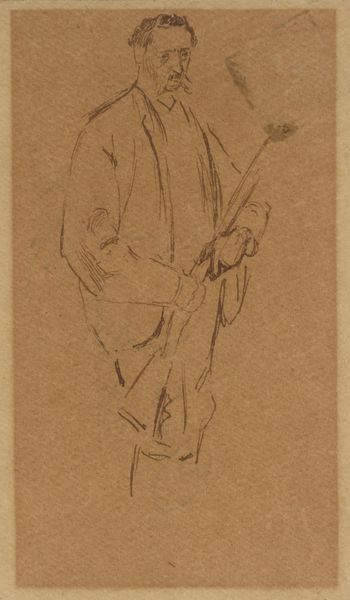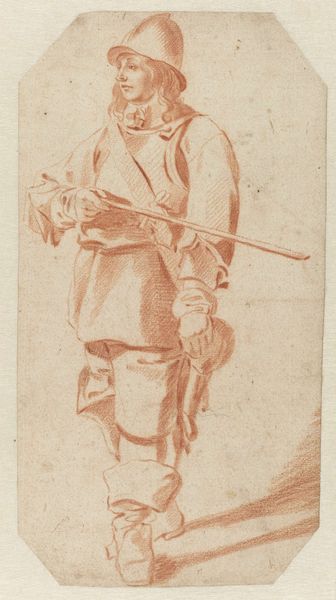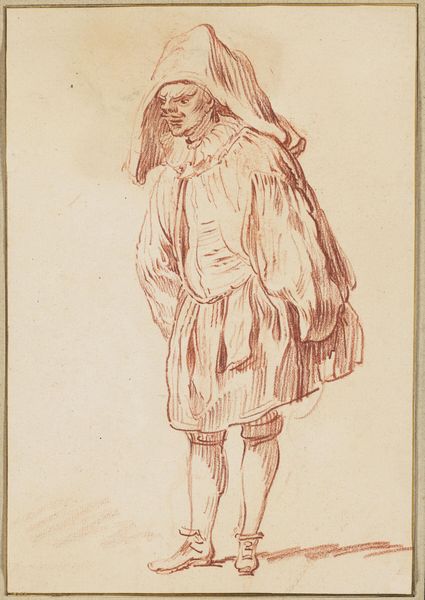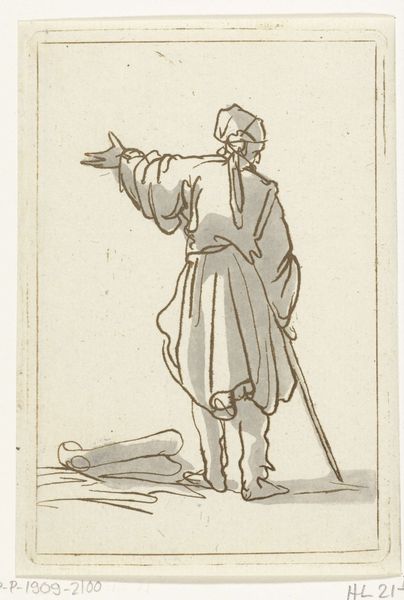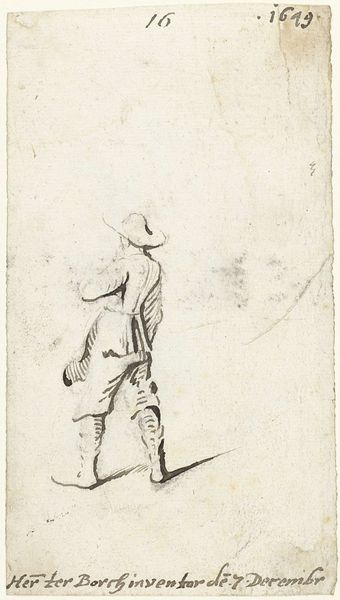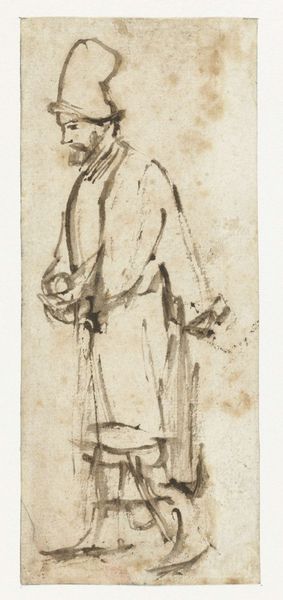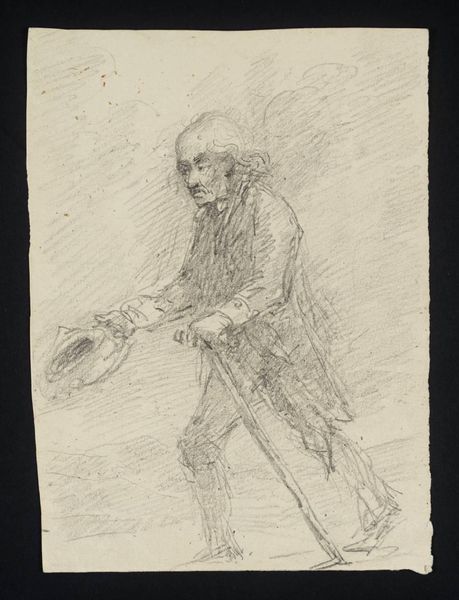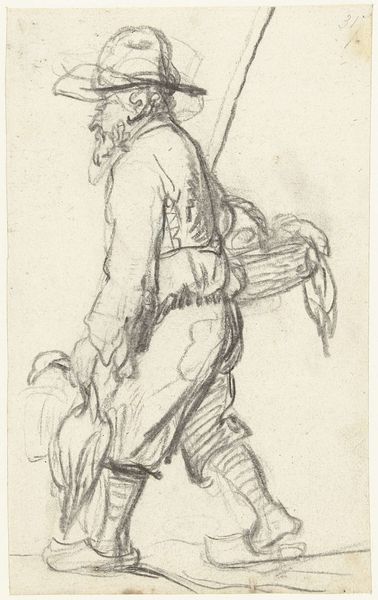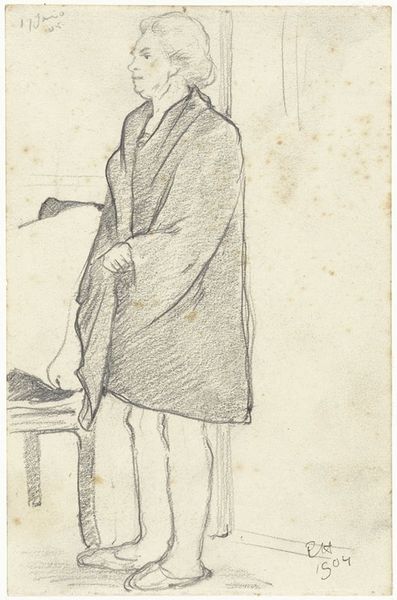
drawing, pencil, graphite
#
portrait
#
drawing
#
pen sketch
#
figuration
#
romanticism
#
pencil
#
graphite
Dimensions: height 79 mm, width 46 mm
Copyright: Rijks Museum: Open Domain
Editor: We're looking at a piece entitled "Lopende man, naar rechts," or "Walking Man, to the Right," made sometime between 1770 and 1825 by Simon Andreas Krausz. It's a pencil and graphite drawing of a man walking; the thing that really struck me were the visible strokes that define the clothing and figure. What can you tell me about it? Curator: What I see is a very telling sketch in graphite and pencil, and the immediacy of the medium offers a valuable window into the artistic and social conditions of its making. What kind of paper was used? Was it expensive, readily available, or recycled? Each has implications. What was Krausz's social class, and how might his access to these materials shape not just the image but also its function? Was this a preparatory study for a larger work, a quickly jotted observation, or perhaps even a form of social commentary capturing a fleeting moment in the city? Editor: So, it’s less about what the man is doing and more about what went into the making of the image of that man? Curator: Exactly. Look closely at the clothing; how are the folds rendered? This tells us about the skill involved and perhaps even alludes to the textile industry of the time. Graphite and pencil— seemingly simple— connect us to the labour involved in extracting the raw materials, producing the drawing implements, and ultimately, to the economic conditions surrounding artistic creation and consumption in late 18th century and early 19th century. This drawing then is a web of material relations, not simply a portrait. Editor: I never thought about a drawing containing so much information! Now I see how analyzing even seemingly simple materials opens up all these avenues of thinking about class and labor. Curator: Indeed, considering the production and circulation of art and its raw components is crucial. This viewpoint reveals much about our consumer culture, which resonates across centuries.
Comments
No comments
Be the first to comment and join the conversation on the ultimate creative platform.
